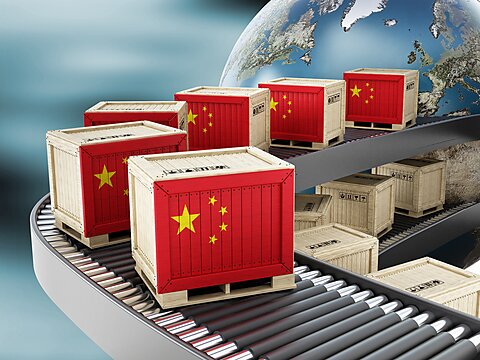Whoever leads the incoming Trump administration’s trade team faces a difficult task. In the face of theoretical flaws, historical experience, and, frankly, common sense, they will have to convince Americans that a policy of deliberate inefficiency and increased costs through higher tariffs will somehow make the country better off. But prosperity through higher taxes on imported goods is neither an intuitive nor easily swallowed argument—and mountains of economic evidence show why.
Tariffs’ well-known drawbacks are a defect that Trump’s camp is reportedly already grappling with as they attempt to make the case for a raft of new import taxes. Although the exact contours of their arguments remain to be seen, a study released earlier this year claiming alleged benefits from higher import duties is likely to figure prominently. Try as it might, however, the study did not upend centuries of insight into the virtues of free trade. Indeed, a look under the study’s hood reveals it to be little more than an exercise in economic alchemy.
Released by the Coalition for a Prosperous America (CPA), the study employs a model in which a 10 percent tariff is imposed on all US imports. Surprisingly — at least to those with a passing familiarity with economics — the CPA forecasts the higher tariffs to produce a nearly 3 percent increase in real GDP, a 4.77 percent rise in manufacturing output, 5.7 percent higher household incomes, and an additional 2.8 million jobs. Incredible stuff.
Here’s the core argument:
The tariff makes imports less competitive and domestic production of manufactured and other goods rises to take advantage of the opportunities. Increased domestic production leads to more jobs and more capital investment. The stimulus to the goods-producing sector flows through to the services sector, with the result that the entire U.S. economy expands.
Essentially, imports are replaced with domestically produced goods that lead to salutary effects for the broader US economy. But this flies in the face of accepted economic wisdom, chucking established concepts such as comparative advantage and the virtues of specialization out the window.
As economists Joseph Francois and Robert Koopman detailed in a September letter, the CPA study arrives at its numbers by using several assumptions untethered from economic reality and expert consensus. Among them:
The United States enjoys excess capital and labor. For American workers and businesses to pick up the slack created by reduced imports, there must be workers and capital that can be deployed to new uses. But as Francois and Koopman point out, the United States has been running near full employment (absent a relatively sharp but brief COVID-19 pandemic spike, unemployment has been under 5 percent for over eight years). There aren’t many workers or capital laying idle.
Tariffs will prompt the US economy to become more productive. For the US economy to increase its output (as the CPA study claims), it would have to become more productive. But that doesn’t follow at all. If Americans were relying on imported goods instead of domestic goods prior to a tariff’s introduction, that’s a key sign that the imported product was being produced more efficiently. Replacing efficiently produced imports with less efficiently produced domestic goods is the opposite of a productivity boost. Furthermore, approximately half of all US imports are inputs for US firms. Raising the cost of those inputs via tariffs — think, for example, imported robots and machinery for US factories — is hardly a formula for efficiency and productivity. None of this makes sense.
Foreign retaliation goes unmentioned. If the United States imposes tariffs on foreign goods, it should expect foreign governments to respond in kind. Such retaliation happened after the 1930 Smoot-Hawley tariffs and after the Trump administration slapped tariffs on goods from China and Europe (among other examples). Countries are already threatening to do it again if Trump proceeds with new tariffs. Suffice it to say, such retaliation will compound the damage of new tariffs by putting US exports at a competitive disadvantage. Yet higher tariffs on US exports and their effects go unmentioned by the CPA study.
But the case against tariffs doesn’t merely rest on the CPA study’s flawed assumptions. We also have plenty of actual experience and scholarly research to draw upon. Most notably, a US International Trade Commission report that examined the tariffs during President Trump’s first term found that duties on steel and aluminum led to the protected industries (e.g., US steel mills) increasing their output by an average of $2.8 billion ($1.5 billion for steel and $1.3 billion for aluminum) per year, certain industries subject to higher steel and aluminum costs saw their annual output decline by an average of $3.4 billion.
The USITC found that the downstream industries most harmed by higher costs included industrial machinery manufacturing, general-purpose machinery, and agriculture, mining, and construction manufacturing. Thus, and directly contrary to what tariff advocates are reportedly claiming today, the USITC calculated an annual net economic loss of around $600 million.
And that’s just for the directly affected US industries examined. As my colleagues Clark Packard and Scott Lincicome wrote on this blog in August, more than a dozen studies by university economists, think tanks, and government agencies have examined these tariffs and have found other economic harms. The general consensus: “Americans faced significant losses from the tariffs (and inevitable foreign retaliation), including higher tax burdens and prices, loss in wages and employment, reduced consumption, decreased investment, a decline in exports, and overall aggregate welfare.”
The benefits of free trade and the costs of tariffs remain straightforward, rooted in compelling economic logic, and supported by piles of empirical research. Tariffs’ net economic harms are one of the few issues on which almost all economists — left, right, and center — agree. Raising costs and introducing barriers to the efficient production of goods — and inviting other countries to respond in kind — will harm American consumers and businesses and ultimately harm the US economy overall. Try as protectionists might to prove otherwise, protectionism remains an economic loser, and no amount of alchemy will change that fact.

